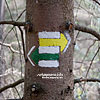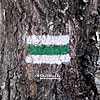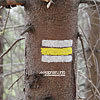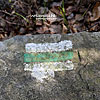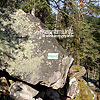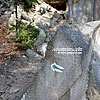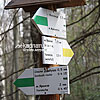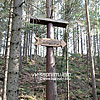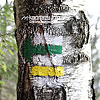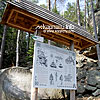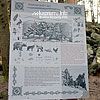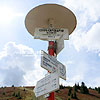Marked Paths
On many settlements' pages (as e.g. Yaremche or Kosiv district) you can see routes descriptions, many of them are marked. What does the route marking mean?
The most important is that those markers are of a certain colour, that helps to orientate and not to get out of the right path. Mostly they are put on the trees in a way to see one sign after the previous one. Sometimes markers can be put on stones or other noticeable objects (rocks, posts etc.). Sometimes one can see pointers in a shape of cursors, where the final or intermediate point of a route, distance to that place and travel time with average speed without breaks can be indicated. Sometimes routes can be put on each other, you can see then the double marker. Routes have different colors, which also have certain rules. For example, routes that run along mountain ranges, usually are marked by red colour, ascending routes (running to the top of a mountain or mountain range) — by green or blue, connecting routes — by yellow or black. On some routes one can see boards with different sorts of information (geography, history, culture etc), which concerns to the particular locality. Don't forget that even simple walks to the mountains demand responsible attitude and appropriate outfit (boots, rain protection etc).Some more cautions:
- On straight distances and roads without any subroads it is allowed to set signs in 300 m far from each other, but at the open localities — at any objects, which are 15 m far from the road side.
- If you lose marking on the route, always come back to the last visible sign and try to find the continuation of the marked route.
- If on the subroad (or the crossroads) there are no signs, always follow the road with better surface to the next visible sign. If there are no signs for a long period, use the available map.
- On the nature protection areas tourists can move just along the marked routes or along the recommended paths.

 Ukraine
Ukraine Poland
Poland Slovakia
Slovakia
 Українською
Українською